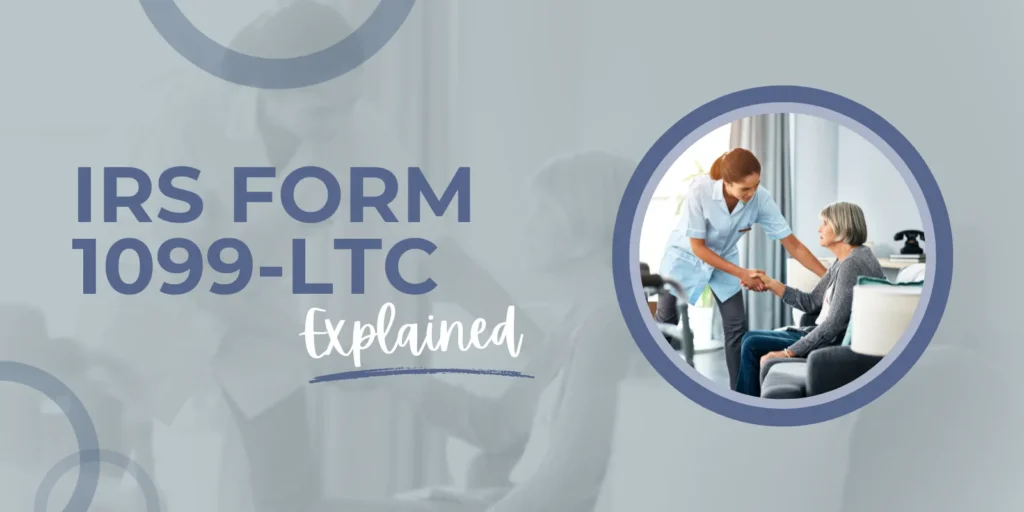As the landscape of health care and financial planning evolves, it becomes increasingly crucial to understand the various tax forms that can impact both. One such form is the IRS Form 1099-LTC. This article aims to provide a comprehensive overview of what Form 1099-LTC is, its purpose, and how it affects taxpayers.
What is IRS Form 1099-LTC?
IRS Form 1099-LTC reports payments made under a long-term care insurance contract and accelerated death benefits. Typically issued by insurers, it provides necessary information to the taxpayer and the IRS. The form helps ensure that these payments are properly reported and taxed according to IRS regulations.
Key Components of Form 1099-LTC
- Payer Information: This section includes the name, address, and taxpayer identification number (TIN) of the entity making the payments. This information is crucial for the IRS to track the source of the payments.
- Recipient Information: This section includes the name, address, and TIN of the individual receiving the payments. It ensures that the payments are attributed to the correct taxpayer.
- Account Number: An optional field that may be used by the payer to identify the recipient’s account. This can help with record-keeping and future reference.
- Box 1 – Gross Long-Term Care Benefits Paid: This box reports the total amount of long-term care benefits paid during the tax year. These benefits may include payments for nursing home care, in-home care, and other long-term care services.
- Box 2 – Accelerated Death Benefits Paid: This box reports the total amount of accelerated death benefits paid during the tax year. These benefits are paid to individuals who are terminally or chronically ill. They’re generally paid out of a life insurance policy.
- Box 3 – Per Diem or Reimbursement: This box indicates whether the benefits were paid on a per diem basis (a fixed daily amount) or as reimbursement for actual expenses incurred. The tax treatment can vary depending on the type of payment.
- Box 4 – Qualified Contracts: This box is checked if the payments were made under a qualified long-term care insurance contract. Qualified contracts generally offer favorable tax treatment.
- Box 5 – Payments Excludable from Gross Income: This box indicates the portion of the payments that may be excludable from gross income under IRS rules. Excludable amounts reduce the taxable income for the recipient.
Why is Form 1099-LTC Important?
Form 1099-LTC helps ensure that long-term care benefits and accelerated death benefits are properly reported to the IRS. These payments can have significant tax implications. Therefore, accurate reporting is crucial for both the payer and the recipient to comply with tax laws. Failure to report these payments accurately can lead to penalties, interest, and additional taxes.
Tax Implications of Long-Term Care Benefits
The tax treatment of long-term care benefits depends on several factors. This includes whether the policy is considered a qualified long-term care insurance contract and how the benefits are paid.
Qualified Long-Term Care Insurance Contracts
Payments under a qualified contract are generally not taxable up to certain limits. For 2024, the daily limit for tax-free benefits is $410. This means that if the benefits do not exceed $410 per day, they are excludable from gross income.
Per Diem Payments
If the benefits are paid on a per diem basis, they are excludable from gross income. Taxpayers can exclude up to the daily limit. Any amount exceeding this limit may be taxable. For example, if the per diem amount is $450, then $40 per day ($450 – $410) would be considered taxable income.
Reimbursement Payments
If the benefits are paid as reimbursement for actual expenses incurred, they are generally excludable from gross income. This is provided the expenses are for qualified long-term care services. So, if you’re reimbursed for $500 of actual expenses, $0 would be taxable if the expenses were qualified.
Accelerated Death Benefits
Accelerated death benefits are payments made under a life insurance contract to an individual who is terminally or chronically ill. Usually, these are also reported on Form 1099-LTC. In general, you can exclude these from gross income if you meet certain conditions.
Terminally Ill Accelerated Death Benefits
If the insured individual is terminally ill, the accelerated death benefits are fully excludable from gross income. So, if a life insurance policy pays out $100,000 in accelerated death benefits to a terminally ill individual, $0 would be taxable.
Chronically Ill Accelerated Death Benefits
If the insured individual is chronically ill, the benefits are excludable up to the same limits that apply to qualified long-term care benefits. For example, let’s say the chronically ill individual receives $30,000 in benefits for the year. If the benefits do not exceed the per diem limit, then none of that amount would be taxable.
Filing and Record-Keeping
Recipients of Form 1099-LTC should use the information provided to accurately report their income on their federal tax returns. It’s essential to retain copies of Form 1099-LTC and any related documentation, such as receipts for long-term care expenses. You should keep these for at least three years after you file the return or when the return is due, whichever is later. This documentation is vital in case of an IRS audit or if there are any questions about the reported amounts.
How to File Form 1099-LTC
First, carefully review Form 1099-LTC for accuracy. Ensure that the amounts reported and your personal information are correct. Be sure to report the amounts from Form 1099-LTC on your federal tax return. This may involve including the gross benefits in your income and then applying any exclusions as allowed. Given the complexities of tax laws regarding long-term care benefits, consider consulting a tax professional to ensure accurate reporting. Doing so can also maximize any allowable exclusions.
Tax Help for Those Who File Form 1099-LTC
Understanding IRS Form 1099-LTC is crucial for taxpayers who receive long-term care benefits or accelerated death benefits. Proper reporting and compliance with tax regulations can help avoid potential issues with the IRS. It can also ensure you correctly exclude eligible benefits from gross income. If you receive Form 1099-LTC, consider consulting a tax professional. With the right knowledge and preparation, you can effectively manage your long-term care benefits and their impact on your taxes. Optima Tax Relief is the nation’s leading tax resolution firm with over $3 billion in resolved tax liabilities.
If You Need Tax Help, Contact Us Today for a Free Consultation
Publisher: Source link










